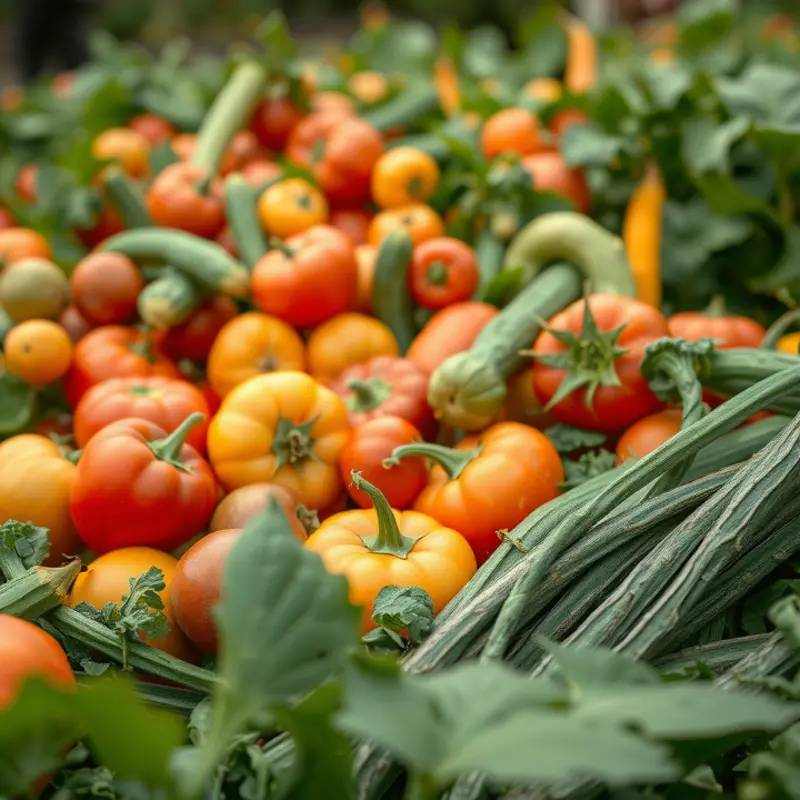Food safety is crucial for maintaining good health and minimizing waste. Knowing how to store food properly, identify spoilage, and manage your kitchen can save you time and money while keeping you safe. This guide offers straightforward, practical checks and tips to ensure your food remains safe for consumption while enhancing your kitchen management skills.
Smart Storage for Freshness

Maximizing food freshness and safety starts with understanding how to store different types of food properly. Each category has unique needs, which, if met rightly, prolong their life and reduce waste.
Fresh Produce
Fresh fruits and vegetables often last longer if stored in the right conditions. Most vegetables prefer cooler temperatures with high humidity. Keep them in the crisper drawer of your fridge, which is specifically designed to offer these conditions. Leafy greens, like lettuce and spinach, can benefit from being stored in breathable containers to prevent excess moisture buildup, which causes spoilage. Meanwhile, fruits like apples and pears should be kept separate from other produce due to the ethylene gas they emit, which can speed up ripening.
Dairy and Eggs
Dairy products demand consistent cold temperatures to maintain freshness. Store milk and yogurt on lower shelves where it is coldest, rather than in the fridge door, which experiences temperature fluctuations. Eggs should remain in their original carton in the fridge to protect them from absorbing strong smells.
Meat and Seafood
Raw meat, poultry, and seafood should be stored in the coldest part of the fridge, ideally on the bottom shelf to avoid cross-contamination. Ensure they are wrapped tightly or placed in suitable containers to prevent juices from leaking and contaminating other foods.
Grains and Pantry Staples
For dry staples like rice, pasta, and flour, keep them in airtight containers to prevent exposure to air, moisture, and pests. These should be placed in a cool, dark pantry. This strategy not only keeps them fresh but also helps reduce packaging waste by encouraging bulk purchasing.
Organizing Your Storage
Organize your fridge and pantry using the “first in, first out” method. Place newer items in the back so older items are used first. An organized space facilitates easy access to all items, minimizing the likelihood of them being forgotten and going bad. For more specialized techniques on reducing waste in your kitchen, consider this guide on low waste cooking and prep.
Temperature Control
Maintain your fridge at 40°F (4°C) and your freezer at 0°F (-18°C) for optimal food safety. Use a fridge thermometer to ensure accurate readings, as many built-in thermometers can be misleading.
By adopting these smart storage strategies, you can significantly prolong the freshness of your food, ensuring that your plate is both safe and delicious.
Detecting Spoilage: Assessing Food Quality

Ensuring your meals are safe begins with understanding food spoilage. Each food type has unique indicators of spoilage, and recognizing these can prevent foodborne illness.
Fruits and Vegetables
Fruits should be vibrant in color. A dull appearance may indicate decay. Check for bruises, soft spots, or discoloration, as these are signs of over-ripening or disease. Vegetables, like lettuce or spinach, often turn slimy when past their prime. If a carrot snaps easily, it’s fresh; a limp texture suggests spoilage. When detecting mold, remember it’s more than skin deep—discard any visibly contaminated produce.
Dairy
Fresh milk should have no odor and be pure white. If it smells sour or appears yellowish, it’s likely spoiled. Cheese with mold requires caution. While soft cheeses such as cottage cheese should be discarded entirely, hard cheeses can be salvaged by cutting around the mold. Yogurt that separates into liquid with a sour odor has likely gone bad, although some separation is natural.
Meats
Fresh meat has a clean smell and firm texture. A slimy surface or an off-putting odor, akin to ammonia, signals spoilage. Poultry skin should remain firm without sticky patches. For ground meats, uniform coloring is essential. Discolored or overly pink spots can indicate exposure to air. Always handle with clean utensils and store properly to minimize waste and prevent bacterial growth.
Handling spoiled food with care is critical. Dispose of spoiled items in sealed bags to prevent contamination. Proper food storage practices can further reduce spoilage, as discussed in our eco-smart kitchen storage guide. Understanding spoilage indicators helps maintain a safe and waste-conscious kitchen.
Final words
Implementing food safety checks will not only protect your health but also help reduce food waste. By understanding proper storage methods and being mindful of spoilage, you’ll enhance your kitchen management skills significantly. Remember to always inspect your food and organize your storage areas regularly to ensure optimal freshness and safety. Taking these steps will lead to a healthier lifestyle and a more sustainable home kitchen.







